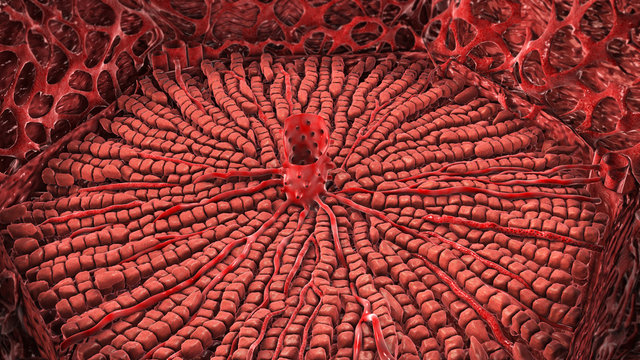
Alkaline phosphatase is an enzyme that is involved in a wide range of processes and is found in many parts of the body, particularly the liver, intestines and bones. It is often high in people with liver or bone disease. The ALP test is often requested with other tests if someone has symptoms of a liver or bone disorder. It is included as part of a panel of tests performed on the same blood sample called Liver Function Tests (LFTs). It is also used to help diagnose bone disease such as Paget’s disease and cancer. ALP can also be elevated in some gastrointestinal diseases.
What is being tested?
Alkaline phosphatase (ALP) is an enzyme found in high levels in bone and liver with smaller amounts found in the intestines. Small amounts of ALP are also found in the placenta of pregnant women. Each of these body parts makes different forms of ALP.
How is it used?
In conditions affecting the liver, damaged cells in the liver release increased amounts of ALP into the blood. This test is often used to detect blocked bile ducts because ALP is especially high in the cells that line bile ducts. If one or more of them are obstructed, for example by a tumour, then blood levels of ALP will often be high.
Any condition that affects bone growth or causes increased activity of bone cells can affect ALP levels in the blood. An ALP test may be used, for example, to detect cancers that have spread to the bones or to help diagnose Paget's disease, a condition that causes malformed bones. This test may also sometimes be used to monitor treatment of Paget's disease or other bone conditions, such as vitamin D deficiency.
When is it requested?
ALP is generally part of a routine laboratory test profile called liver function tests. It is usually requested with several other tests if a patient has symptoms of a liver or bone disorder.
What does the result mean?
Raised levels of ALP are usually due to a disorder of either the bone or liver. If other liver function tests such as bilirubin, gamma-glutamyl transferase (GGT), alanine aminotransferase (ALT) or aspartate aminotransferase (AST) are also raised, this usually indicates that the ALP is coming from the liver. However if other liver function tests are normal, this suggests that the ALP might be coming from bone. In some forms of liver disease, such as hepatitis, ALP is usually much less elevated than AST or ALT. However, when the bile ducts are blocked (for example by gallstones, scars from previous gallstones or surgery, or by a tumour), ALP and bilirubin may be increased much more than either AST or ALT. ALP can also be raised in bone diseases such as Paget’s disease (where bones become enlarged and deformed), vitamin D deficiency, healing fractures or in certain cancers that spread to bone.
Is there anything else I should know?
Pregnancy can increase ALP levels. Children have higher ALP levels because their bones are growing and ALP is often very high during the 'growth spurt' which occurs at different ages in males and females. Occasionally young children may have a very high ALP level for a short time and this is not a sign of disease.
Eating a meal, particularly if it contains a lot of fat, can increase the ALP level slightly for a few hours in some people. Ideally the test should be done after fasting overnight. Some drugs may increase ALP levels, including some antibiotics and some of the drugs used to treat psychiatric problems or epilepsy, but significant increases are rare.
Common questions
Other commonly used liver tests include other enzymes found in liver cells, such as alanine aminotransferase (ALT), gamma-glutamyl transferase (GGT), aspartate aminotransferase (AST), and bilirubin (a breakdown product of red blood cells).
While many things could harm the liver, the major causes of liver disease are: infection by viruses; drinking too much alcohol; and liver disease associated with the `metabolic syndrome’ (often seen in obese people prone to diabetes). In rare cases, some medicines can damage the liver and liver tests are used to monitor whether this is occurring and how severe the damage is. Some inherited conditions can damage the liver.
In many cases, liver disease has few symptoms. When the liver is damaged rapidly (acute hepatitis), the skin and the whites of the eyes often can turn yellow. In its late stages, liver disease can cause confusion, easy bruising, swelling in the abdomen and vomiting blood.
The doctor may order a test such as ALP isoenzymes to help work out if a high ALP level is caused by liver disease or bone disease. However, usually there would be other signs of either liver or bone disease, such as other abnormal liver enzyme tests
Pathology Tests Explained (PTEx) is a not-for profit group managed by a consortium of Australasian medical and scientific organisations.
With up-to-date, evidence-based information about pathology tests it is a leading trusted source for consumers.
Information is prepared and reviewed by practising pathologists and scientists and is entirely free of any commercial influence.